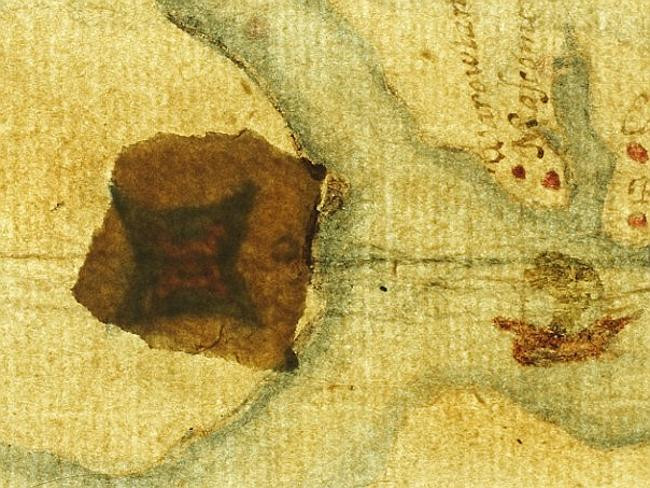Secret clue on 400-year-old map may solve mystery of lost colony of Roanoke

A secret clue on a 400-year-old map might solve the long-standing mystery of the lost colony of Roanoke. Researchers from the First Colony Foundation say they have found evidence that this lost colony went "native".
The group of 115 people were sent to the New World to set up a new city in 1587 by Queen Elizabeth. She wanted to expand the British Empire and sent 90 men, 17 women and 11 children to do this – and they became known as the Roanoke Colony. However, six years later their settlement was found to be deserted, with no trace of the colony or signs of a struggle or battle.
However, this mystery may have finally been solved. A 16<sup>th century map drawn by governor John White, who had headed the colony before returning to England to fetch supplies, was examined by experts at the British Museum following a request by the First Colony Foundation. Using advanced imaging techniques, they found hidden markings drawn with invisible ink, appearing to show a "fort-like image".
Researchers believe this was an inland fort where the colony might have resettled after abandoning their original camp. Alastair Macdonald, officer and archaeologist for the First Colony Foundation, told news.com.au: "It was a matter of curiosity on one of our board members, Brett Lane, who just casually asked, 'What are those patches there for?"
Elizabethan artefacts uncovered
This led archaeologists to search the area marked for three years and during this time, a huge volume of Elizabethan artefacts were uncovered. "Elizabethan artefacts just do not appear on sites like this," Macdonald said. "Elizabethan artefacts appear on very few other sites in Carolina at all. There's virtually none... the concentrations of Elizabethan objects are on Roanoke Island, the site of the Croatan village and our site.
"Nobody else would have had that, especially since no other English or Europeans were in that area until Nathaniel Batts came in the 1650s. It is interesting too that there were artefacts from several pots, it wasn't just one object that was broken. That suggests there might have been a certain continuity at the site for a period of time."
However, the mystery did not end there. Markings left at the original Roanoke Colony suggested the group had moved to the nearby Croatan Island – the word Croatan had been carved into a post, while Cro was engraved in a nearby tree.
At present, the evidence is still speculative but experts now believe some of the colony went to live at this site, while others fractured off to live with a small Native American group living close by. McDonald explained: "Something happened between 1587 and 1590, we know they were there in 1587 and we know they were gone in 1590, and it is certainly expected that some of them went to the village of Croatan [an island off the coast of North Carolina], but we think that area would not have been large enough to support all of the villagers."
Archaeologists plan to carry out further excavations to finally establish what happened to this group of people. Macdonald added: "We are definitely treating this as a high-priority site. No one in archaeology wants to predict what will be found, but this is a known significant spot and we hope to continue to study the surrounding unknowns."
© Copyright IBTimes 2025. All rights reserved.






















